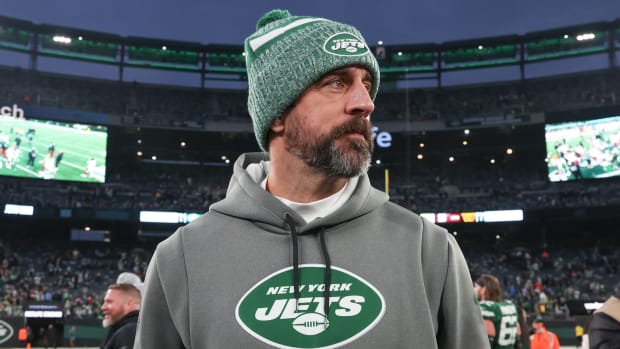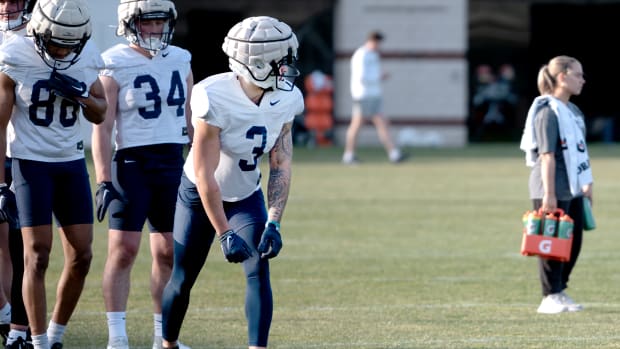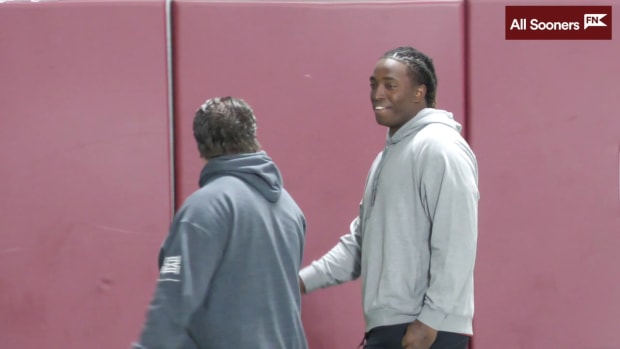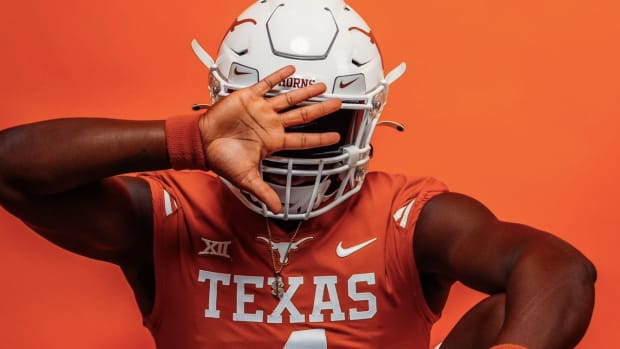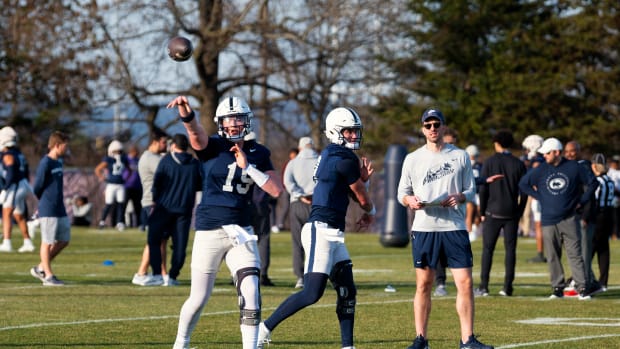The 2020 College Football Season Deconstruction Project Has Begun
The deconstruction of the 2020 college football season accelerated Thursday. Where it ends, we still don’t know. Perhaps in spring 2021. Perhaps there is no ending, because there is no beginning.
The options are simultaneously dwindling and reducing in quality.
The Big Ten pushed us closer to business as unusual with a somewhat jarring announcement that it will play a conference-only schedule. It’s a logical move, but an early one—as one athletic director said, “Why do that on July 9? Why not Aug. 9?” It’s also a depressing move—among the games that will not be played are Wisconsin-Notre Dame, Ohio State-Oregon, Michigan-Washington, Penn State-Virginia Tech and Miami-Michigan State. Some great matchups have been wiped off the books.
Sources told Sports Illustrated that one Big Ten option under consideration is a ten-game slate, one more than they schedule annually, with division games potentially moved to the front of the schedule. (You ready for Ohio State-Michigan in September or October?) Perhaps one opponent would be added to existing schedules, or perhaps multiple matchups would be recast based on geography.
Commissioner Kevin Warren told SI that his office will dig into scheduling over the course of the next week, in consultation with schools and television partners. “We’re trying to figure out a way to play a season safely and responsibly,” he said. “But we’re also prepared not to play.”
That’s the doomsday prep that everyone is at least considering at this point. The economic fallout would be ruinous, but health considerations may well veto all other plans. No sport faces more health-and-safety issues than one with 100 athletes per team who compete in a physically confrontational sport that is played on campuses populated with thousands of students.
Several industry sources have targeted Aug. 1 as a cutoff date for playing in the fall. But other actions clearly are being taken between now and then in hopes that some sort of fall season is possible.
It’s likely that the Big Ten will have conference-only scheduling company from other Power-5 leagues later this month or in early August. There has been industry speculation for several days that the Pac-12 is working on the same plan, and Brett McMurphy of Stadium reported Thursday that the Atlantic Coast Conference is likely moving in the same direction.
The Big 12 and Southeastern Conference don’t appear to be there yet. They may be willing to wait longest before changing plans—but also may be most willing and able to jump ahead to spring.
With most of their league members in warm-weather locales, they would have fewer league-wide problems with a spring season that likely would commence in late winter. Sources told SI Thursday that some athletic directors in both those leagues are in favor of the idea and willing to champion the cause with conference leadership.
“I think spring is more viable than fall,” said a SEC AD. “What we have currently scheduled is not realistic. If somebody told me we could play conference-only in the fall, that would be great. But I’m not sure we can play one game, let alone a full conference schedule.”
But one league’s solution is another league’s last resort, as multiple officials at Big Ten schools have termed a spring season. That would be the hardest conference to make it work, presuming practices would begin in the dead of winter and games might be starting in mid-to-late February. That’s a more palatable option in Gainesville and Austin than it is in Madison and State College.
But the idea of a full season in the spring could be unlikely as well. One Big 12 AD said he believed schools could play only 50 to 75% of a full regular-season schedule in spring ‘21, which is six to nine games.
Data for deciding College Football Playoff teams would be limited. Then again, who knows if there would be a playoff? Has anyone checked to see whether the Rose Bowl and Superdome are booked in May?
That’s just the beginning of the logistical hurdles. How individual schools manage strain on support staff and facilities with every sport in action during the same semester is the stuff of assistant athletic director nightmares. And the number of high-level players who would skip a spring season in favor of preparing for the National Football League could be huge.
So salvaging a fall season would be abundantly less messy, if it’s the responsible decision from a health standpoint. If a full one can’t be played, a conference slate would do. Constricting to league play provides comfort in a few key areas:
- Greater consistency of campus protocols, testing procedures and thresholds for when to play or when to cancel. The Big Ten has a task force of reps from every campus who have been studying the pandemic and all developments; they can help inform decisions on uniform guidelines for all schools. Non-conference opponents—especially those with less financial wherewithal—could bring a less rigorously tested or quarantined team onto campus. They also could feel pressure to take risks in order to secure a seven-figure guarantee check for playing the game.
“What kind of guarantee do I have when they come here that they're infection-free?” said one Power-5 AD. “Do they have the resources?”
- Geographic proximity isn’t what it used to be in college conferences, but most Big Ten teams could still avoid plane flights in favor of bus rides for most league games. The outliers are the teams at the far west and far east. Nebraska is 300 miles from its nearest neighbor, Iowa, and Rutgers is cloistered away nearly 200 miles from the nearest conference opponent, Maryland. (The Scarlet Knights continue to be the problem child of the league. Thanks, Delany.)
- Crowning a champion remains important to every league. The only way to do that is by playing conference games, so if something had to go then even the juicy intersectional games were expendable.
Of course, deciding on a conference-only season could merely be a stopgap retrenchment that delays the inevitable by a few weeks. The chances of college football in the fall aren’t dead, but they appear to be dwindling.
